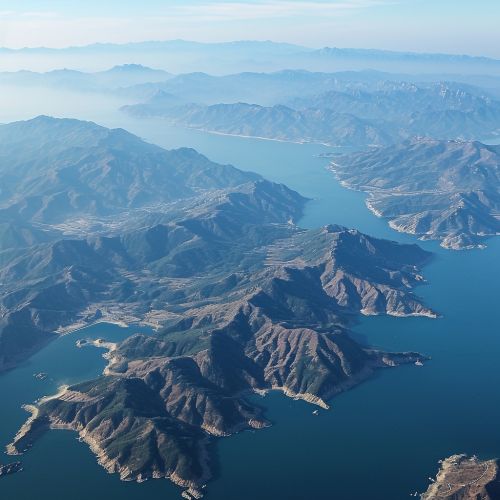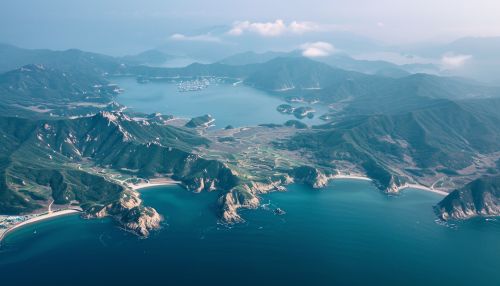Korean Peninsula
Geography
The Korean Peninsula is located in East Asia, extending southwards for about 1,100 kilometers from the Asian mainland. It is bordered by the Yellow Sea to the west, the Sea of Japan to the east, and the Korea Strait and East China Sea to the south. The peninsula is home to two sovereign states, North Korea and South Korea.


Geology
The Korean Peninsula is primarily composed of mountainous terrain, with the highest peak, Mount Paektu, reaching 2,744 meters above sea level. The peninsula is situated on the eastern edge of the Asian continental landmass, and its geology is characterized by a mixture of volcanic, sedimentary, and metamorphic rocks.
Climate
The climate of the Korean Peninsula is characterized by a temperate monsoon climate, with four distinct seasons. The peninsula experiences hot, humid summers and cold, dry winters. The monsoon season, known as jangma, typically occurs in late June to early July.
Flora and Fauna
The Korean Peninsula is home to a diverse range of flora and fauna. The peninsula's forests are dominated by deciduous trees in the north and evergreen trees in the south. Notable animal species include the Korean tiger, the Amur leopard, and the Korean goral.
History
The history of the Korean Peninsula is complex and multifaceted, with human habitation dating back to the Paleolithic era. The peninsula has been ruled by numerous kingdoms and dynasties, including the Three Kingdoms of Korea, the Goryeo Dynasty, and the Joseon Dynasty.
Demographics
As of 2021, the Korean Peninsula has a combined population of approximately 76 million people, with the majority residing in South Korea. The peninsula is largely homogeneous, with Koreans making up the vast majority of the population.
Culture
The Korean Peninsula boasts a rich cultural heritage, with distinct traditions in art, music, cuisine, and literature. Notable cultural elements include Hangul, the Korean alphabet, Korean cuisine, and traditional Korean music, known as gugak.
Economy
The economies of North and South Korea are markedly different, with the former being a centrally planned economy and the latter being a mixed economy. Major industries on the peninsula include electronics, automobiles, shipbuilding, petrochemicals, and textiles.
Politics
The Korean Peninsula is divided into two distinct political entities: North Korea, officially known as the Democratic People's Republic of Korea (DPRK), and South Korea, officially known as the Republic of Korea (ROK). The two states have been separated since the end of the Korean War in 1953.
